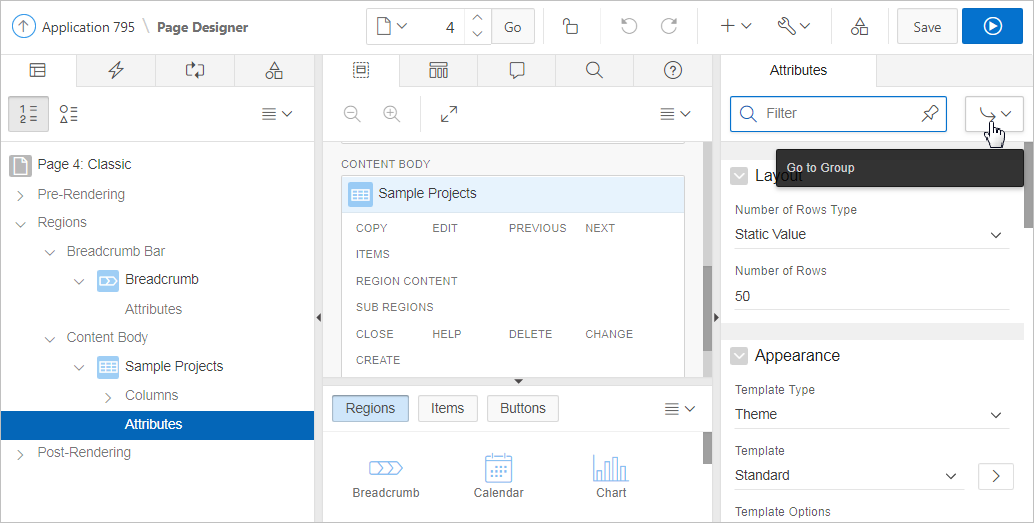9.7.2 Managing Classic Report Attributes
Report Attributes control how a classic report works. Developers edit report Attributes to alter the report appearance, configure report pagination, create error messages, break formatting, and configure download options.
- Editing Classic Report Attributes
- Editing Classic Report Pagination
- Adding Support for XML File or a CSV File Export
- Enabling Classic Report CSV Output Option
- Controlling Classic Report Column Breaks
See Also:
Parent topic: Managing Classic Reports
9.7.2.1 Editing Classic Report Attributes
You can customize a classic report by editing report attributes in Page Designer.
To edit report attributes:
Parent topic: Managing Classic Report Attributes
9.7.2.2 Editing Classic Report Pagination
To control classic report pagination:
Parent topic: Managing Classic Report Attributes
9.7.2.3 Adding Support for XML File or a CSV File Export
You can add support for exporting a report as an XML or CSV by selecting a report template.
To export a report as a file:
Parent topic: Managing Classic Report Attributes
9.7.2.4 Enabling Classic Report CSV Output Option
To use the enable the CSV output option:
Parent topic: Managing Classic Report Attributes
9.7.2.5 Controlling Classic Report Column Breaks
You can control if a specific column repeats and how column breaks appear when printed using Break Formatting attributes. For example, suppose your report displays employee information by department number. If multiple employees are members of the same department, you can increase the readability by specifying that the department number only appears once.
To create this type of column break:
Parent topic: Managing Classic Report Attributes
